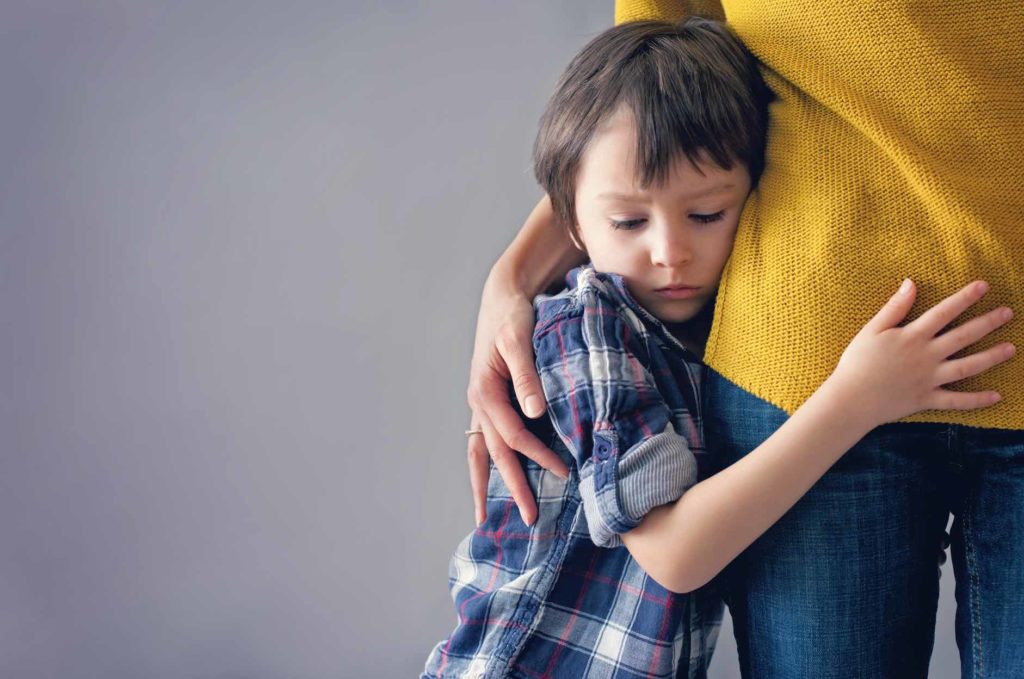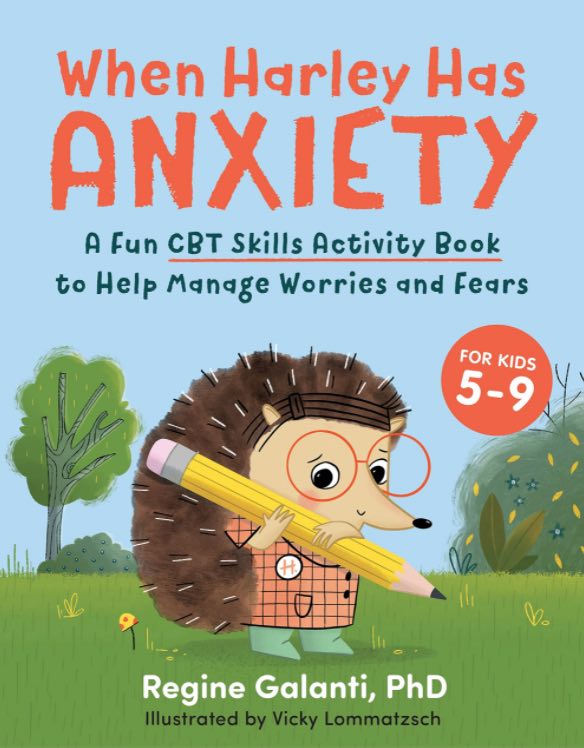It’s hard for parents when their kids are dealing with overwhelming anxiety, as I know from personal experience. My now-ten-year-old daughter Ada went through an intense couple of years of fear and panic that started in second grade. Even as a psychologist who specializes in treating anxiety, I found it very challenging to know how best to help her.

Therapy with a trained professional will often be part of the solution, as it was for Ada. However, it’s harder than ever to find a psychotherapist with availability. I recently tried to refer someone to a colleague’s clinic since my own practice is full, and was told that they have three hundred people on their waiting list. In this context, parents have a big role to play in supporting their anxious kids.
- Recognize Excessive Anxiety
The first step in addressing anxiety is to recognize when it’s a problem—which often isn’t easy. “Anxiety is a normal emotion that everybody has,” according to clinical psychologist Dr. Regine Galanti, who specializes in treating anxious kids. “So we can expect our kids to be anxious,” especially when the threat is real. The challenge is to know when our child has crossed the boundary between “that normative experience of being afraid in a way that keeps us safe,” and anxiety that may require more parental support.
One clue is to notice how long it lasts. It’s normal to see a spike of anxiety “during periods of transition like school or camp,” said Galanti. “It’s totally within the bounds of ‘typical’ for a kid to be anxious in September when school starts, and then it goes away within the first couple of weeks.” Anxiety becomes more of a problem “if a kid is still anxious in mid-October after six weeks of school.”
It’s also important to assess functioning, like if “they’re not meeting the developmental challenges that their peers are meeting,” Galanti said. She gave the example of a child who’s struggling to make new friends the way most of their peers are able to do. It was clear that my daughter’s anxiety was excessive when she resisted going to school, and told us that she spent all of recess glued to one spot on the playground.
- Manage Your Own Anxiety
It’s also a normal human response to feel uncomfortable when our child is distressed. Moreover, as Galanti pointed out, anxious kids often have anxious parents, and our child’s anxiety can trigger our own worries and fears: What if they don’t get better? What if their anxiety hurts their school performance? What if they don’t make friends?
As you’re making efforts to help your child through their anxiety, take steps to manage your own. It’s unrealistic to expect to eliminate our anxiety, but simply being aware of it can help us to respond more effectively to our child’s needs. Thankfully the techniques that are helpful for children’s anxiety are just as effective for adults. Managing our own anxiety makes it easier to avoid unhelpful responses like accommodation.
- Counteract Accommodation
Accommodation means allowing our child’s anxiety to determine our actions—Galanti gave the examples of “checking under the bed for monsters every night,” or answering our child’s repetitive fear-driven questions, like “who’s picking me up today?” when they already know the answer. Most of us would do anything to protect our children—including from the discomfort of feeling anxious, even when there’s no real danger.
However, “When you protect your kids from something that isn’t dangerous, it sends a really unhealthy message,” said Galanti. First, it leads kids to believe that the situation must really be dangerous—otherwise why would we be swooping in to rescue them? It also suggests that they can’t handle the situation, which undermines our children’s sense of agency and self-efficacy when facing a challenge.
“Accommodation seems like it would protect a child,” said Galanti, “but there’s no danger in a child’s not knowing who’s picking them up”—especially when “they know, but they just don’t trust that feeling.” A crucial part of helping kids to overcome anxiety is “helping parents tolerate their child’s discomfort. We have to use our logic to say, ‘I know my kid’s not in danger now, so I need to take that step back and let this play out the way it’s supposed to, instead of swooping in and fixing a problem that I really want to fix right now.”
- Introduce Mindfulness
Mindfulness means being present in our lives, just as they are. This simple approach offers a powerful way to manage anxiety, and can be presented in ways that young minds can make sense of. “The way I talk about mindfulness is just the awareness that you want to be doing one thing at a time,” said Galanti. “So how do I focus my attention on the thing that I’m doing?”
Just placing our attention in the present can be soothing to our nervous systems, because it pulls our focus away from an uncertain future. We can also use mindful awareness “as a way to settle myself, if the thing that I’m doing makes me uncomfortable,” said Galanti—without ignoring or pushing away our experience. “So if I’m in the middle of taking an exam, I can spend a few minutes to focus on my body and where I am in space,” Galanti suggested. “That doesn’t take away the uncomfortable feelings, but it helps me settle into where I am in a way that might be helpful, rather than trying to push the feelings away.”
Meditation is just one of endless ways to practice mindfulness. For kids, Galanti recommends simple games like “I Spy” in which we deliberately notice what’s around us. I also really like her finger tracing game—try it now if you like:
- Start by placing your hand palm-down on a table or desk.
- Take a slow breath in and out.
- Slowly trace around your fingers with the pointer finger of your other hand.
- Keep taking nice slow breaths.
- When you finish, retrace your hand in reverse.
- Notice how you feel when you finish.
Practice with your child so you can reap the benefits, too.
- Foster Bravery
Countless research studies have shown that the most effective way to manage anxiety is by moving through it, rather than trying to avoid it. “We know that avoidance is what keeps kids [and adults] anxious,” Galanti told me. The antidote to avoidance is facing what we’re afraid of, assuming that the danger isn’t unreasonable. It makes sense to avoid ferocious dogs, for example, but not friendly ones.
The key to facing our fears is to lead with action, even if we’re terrified. “Your feelings don’t have to match your actions,” said Galanti. “I can feel a certain way and not act the way my feelings tell me to act,” which is an invaluable lesson to teach our kids. When we face our fears and nothing bad happens, we learn that acting bravely in the face of a trigger will probably make the anxiety go away. Our kids will also discover that even if they still feel anxious after facing their fear, “they can cope with it.” This mastery experience reinforces the awareness that fear doesn’t have to control their actions.
 Galanti offers many more highly effective tools in her new book, When Harley Has Anxiety: A Fun CBT Skills Activity Book to Help Manage Worries and Fears.
Galanti offers many more highly effective tools in her new book, When Harley Has Anxiety: A Fun CBT Skills Activity Book to Help Manage Worries and Fears.
For more CBT and mindfulness practices, check out The CBT Deck for Kids & Teens, which I co-authored with my daughter Ada.
The full conversation with Regine Galanti is available on the Think Act Be podcast: Ep. 144: Dr. Regine Galanti — Empowering Kids to Overcome Anxiety Through the Skills of CBT.